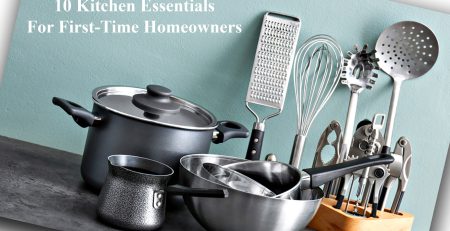How to Build a Tiny House PLANNING YOUR TINY HOUSE Checklist
Building a tiny house is not for everyone.
If you’re considering building a tiny house, it’s important to understand that not everyone can do it. Tiny houses are not easy to build and transport, which means they’re not for everyone. In fact, most people will want to stay in their homes for many years before moving on to bigger more permanent structures—and this has nothing to do with whether or not they like living in small spaces!
A lot of people who are considering buying a tiny house (or even just renting one) might have concerns about how much work goes into maintaining it over time. Tiny houses often require special services like roofing maintenance or electrical wiring upgrades due to their diminutive size; this adds even more stress when trying out living arrangements without any kind of real estate experience under your belt!
“How to Build a Tiny House Easily, Cheaply and in Just Days”

Hi, my name is Adam Ketcher.
I’ve personally built over 300 tiny houses for my clients.
And I’ve experienced just about every building situation imaginable.After years of mastering this unique trade, I’d like to personally teach you everything – and I mean everything – you need to know to build your Tiny House TODAY.
So you can save boatloads of money and time.
LEARN MORE ABOUT ADAM’S TINY HOUSEGet a plan first, then start digging.
It’s important to get a plan first, then start digging. Once you have your design and floor layout in place, it’s time to build!
First, dig the foundation for your home. Next, build the frame of your tiny house by attaching joists and rafters that form its walls and roof. Finally, fill in any gaps between these elements with insulation so they don’t leak heat or cool off too quickly during hot weather seasons—and paint them white so they blend into their surroundings nicely!
Move everything but the essentials.
To start, you should move everything but the essentials. This means that your kitchen and dining area will be in the same room as your bedroom, so you’ll have to put a meal table in there instead of on top of your bed.
But if you don’t have room for a full-size table, then just move some of it outside to make room for whatever else needs to go (like folding chairs).
When deciding what furniture goes where, think about how much stuff each place needs—and what kind of space those items take up. For example: If there’s only one chair in front of your couch, then maybe it would work better as part of an entertainment center instead? A sofa table might look silly next to an armoire-style dresser?
If you have to go to a lot of events, choose a small space.
If you’re looking for a place to entertain friends and family, the tiny house isn’t it. Tiny houses are not places where people can come together and have fun. It’s not a big social gathering place; it’s just a place for you to live in peace and quiet.
In addition to being small enough that most people can’t see inside (or even if they do see inside), most tiny houses don’t have any large windows or doors through which people could enter easily without knocking on your door first. If there is an entranceway into your house, make sure it doesn’t lead directly into another room within the house itself—otherwise someone might be able to break into several rooms at once!
Get rid of your lawn.
- Lawns are expensive to maintain, as they require constant mowing and weeding.
- They’re hard to keep clean. You’ll have to vacuum them often or hire someone else to do it for you, which can be costly if not done by the end of each season.
- Lawns are often hard on the eyes with their monotonous green color scheme, so it’s best if your tiny house is built near a creek or river where you can get some natural scenery in your backyard (or at least inside).
Think about trees when designing your tiny house.
One of the best ways to build a tiny house is to think about trees. Trees add shade, shelter and privacy; they can provide a sense of community; they can give you a feeling of nature; and they’re also an excellent source of security in case you don’t want anyone looking at your home while you’re away.
If you’re interested in adding some greenery around the outside of your home or inside it (like on an outdoor deck), consider planting some trees around there as well! You’ll love how much better it looks than just having concrete all over everything without any greenery at all!
Circular structures are more sustainable than rectangular ones, and so are better for tiny houses.
Circular structures are more sustainable than rectangular ones, and so are better for tiny houses.
Circular structures can be built in a variety of ways, but the most common is with a circle formed by posts that hold up the roof. This structure is usually built using wood or metal framing but can also be made using recycled materials such as hay bales or tires if you’re feeling creative. The walls of your circular house will always be open (no doors), which makes them energy efficient because they don’t require any heating or cooling systems except when it’s cold outside—and even then you’ll have lots of windows so you won’t need much insulation! The only disadvantage is that it takes longer to build since there’s more labor involved—but since most people who live in tiny houses don’t have time for long projects like this anyway (and even if they did), there shouldn’t be much difference between building one doorless small home vs having several large ones all over town!
Build your tiny house using least what you need
The first step to building your tiny house is to use the least amount of materials and tools possible. This will save you money, time, and energy.
- Use as many materials as possible from recycled sources or nearby hardware stores. For example, metal roofing material can be found in many old garages and sheds at no cost—just ask around! If you choose to go with new metal roofing instead, look for sales on thick sheets that are lighter than traditional shingles (and therefore cheaper).
- Use only what you need when choosing windowpanes; if they’re too small for their purpose (like a window crack), then they aren’t worth using at all! You’ll find that most people don’t need more than one or two windows per room anyway so don’t worry about having too much space blocked off by unused glass panes lying around unused in storage boxes somewhere else where nobody knows anything about them anymore…
How to set up a gray water system
Once you have the basics of a grey water system down, it’s time to start thinking about how you will use the water. One of the most common uses for grey water is in your garden. Using an irrigation system can be more cost effective than buying bottled water and using it on plants that need a lot of moisture or nutrients.
Another way to use your grey water is for washing dishes and laundry. This may not seem like such an obvious use at first, but think about it: if you live in an apartment building where there are shared kitchens and bathrooms (and let’s face it—not everyone has their own place), then chances are good that some people will be sharing their cooking pots with yours! So if someone else washes his dish while yours sits soaking in dirty dishwater all day long, wouldn’t that just feel icky? And who wants nasty dishes anyway?
The last thing I want here is something like “Ten Tips For Living Smaller.” So let’s move on now…
How to research and examine the load bearing capacity
Load bearing capacity is the amount of weight a material can support.
Load bearing capacity is important to know in order to make sure that your tiny house will be able to hold up to the demands of its occupants and their possessions.
To determine load bearing capacity, first determine what type of flooring you’ll use for your tiny house: wood or concrete? Then look up each type on this website here (or ask someone who knows!). Once you’ve found out which one works best for your needs, use our handy tool below:
The 5 principles of safety when it comes to tiny houses
The 5 principles of safety when it comes to tiny houses:
- Safety is essential. Safety is not just about being safe, but also about being able to live safely and comfortably in your space. No one wants to live in a house that could collapse at any moment, as it may cause injury or death. A small house should also be built with proper ventilation and insulation so you can enjoy the benefits of living in an area without having to worry about heat exhaustion or freezing cold winters like what many people experience at home during winter months due to lack of ventilation or insulation. In addition, if you want to build a tiny house but don’t have enough money then consider renting out rooms on Airbnb instead! This will help pay for materials needed such as wood beams used for constructing walls which need extra protection against rot due to fungus growths (a common problem).
The best insulation to use for your tiny house
The best insulation to use for your tiny house is foam. This will help keep your home warm in the winter and cool in the summer, as well as save you money on heating and cooling costs. Foam is also highly effective at blocking noise from outside sources, which can be helpful if you live near an airport or train station with frequent flights or trains passing by.
You may have heard that spray foam isn’t an ideal insulator because it doesn’t breathe like traditional insulation does—that might be true if you’re building a new house with no history of leaks or moisture issues (as would be required for spray foam). But if there’s already been some damage caused by water intrusion (for example: mold), then this won’t matter too much anyway because once all repairs are made then they’ll go back into place just fine!













